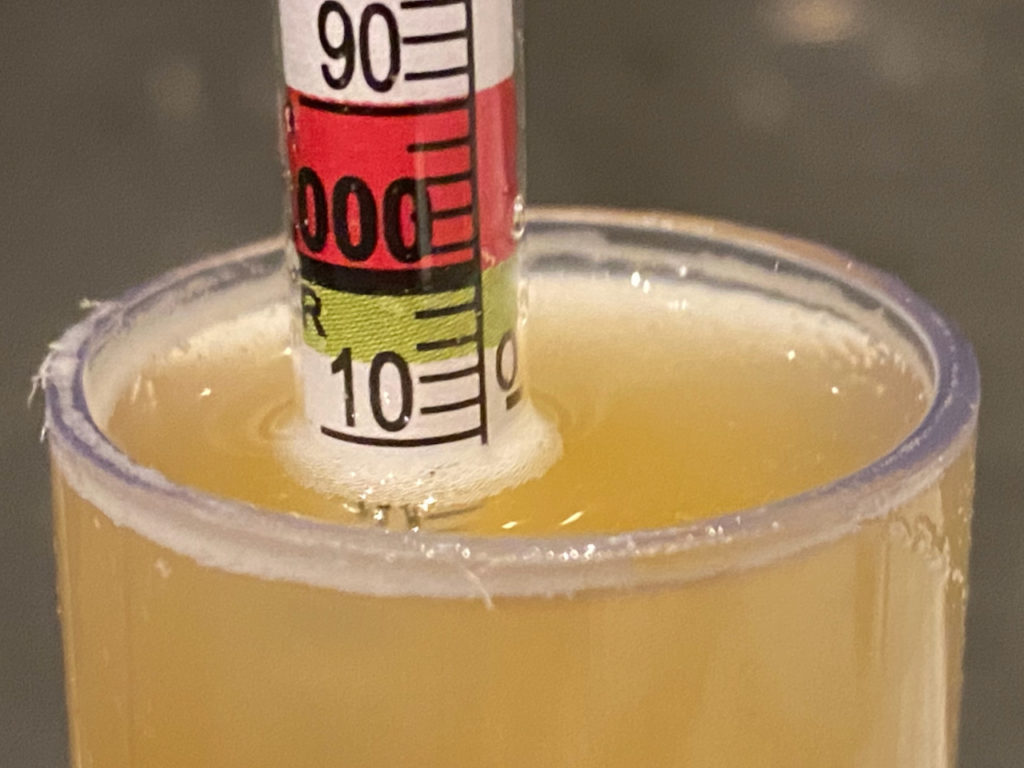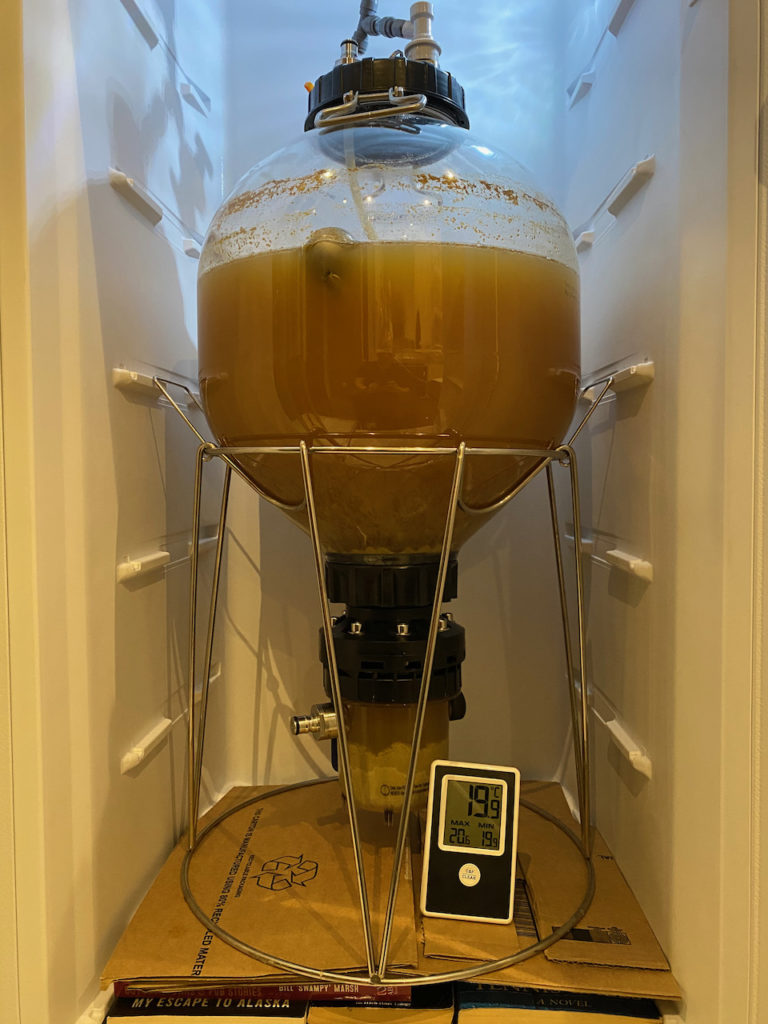Gravity tested at 1.011 today which means she’s only dropped 1 point in two days. That’s technically not stable yet (still producing gas from 8 PSI to 10 in 30 – 40 minutes) but it’s been 4 days since I dry-hopped and that’s already too long for my liking. The brew tastes very nice indeed, with a velvety feel and some subtle hints of citrus. At 1.011 she comes in at 4.33% ABV, which is bang-on the expected 4.3% of its official draught sibling.
Ignoring the gravity, the delay in getting this cold-crashed was down to my new refrigerator not being delivered until yesterday, and it then had to stand half a day in order for the coolant to settle. Until I make a proper shelf for the Fermzilla she’ll have to rest on some paperbacks, which isn’t ideal since it’s not 100% level and I’m concerned about transferring uneven pressure to the vessel via the stand. Seems happy enough for now.
I started the refrigerator at 15:30 and 10 minutes later the thermometer inside was already showing 13 ℃ though obviously the vessel and its contents will take longer to get anywhere near that. In preparation for the increased CO2 absorption that comes with reduced temperature I’ve increased the pressure from 10 to 15 PSI, and will check in later to make sure she stays suitably high to prevent ingress of oxygen.
Speaking of carbonation, I’ve been thinking more about the effect of temperature on the level of fizz in the beer. Using the keg carbonation calculator I see that for 2.0 vols (upper end for a British Ale) at 2.0 ℃ I should set my regulator to 5.1 PSI. If I want the same level of carbonation at 20.0 ℃ I need to dial in 19.8 PSI, and I’ve been fermenting at 10 PSI until now in order to not stress the yeast. Can we therefore assume that in order to arrive at 2.0 vols / 2.0 ℃ I now need 20 PSI and not 15? I’ll definitely check in again later in order to add some more if it looks as though I need it – can always reduce pressure easily enough once the vessel temperature has reached its target.

